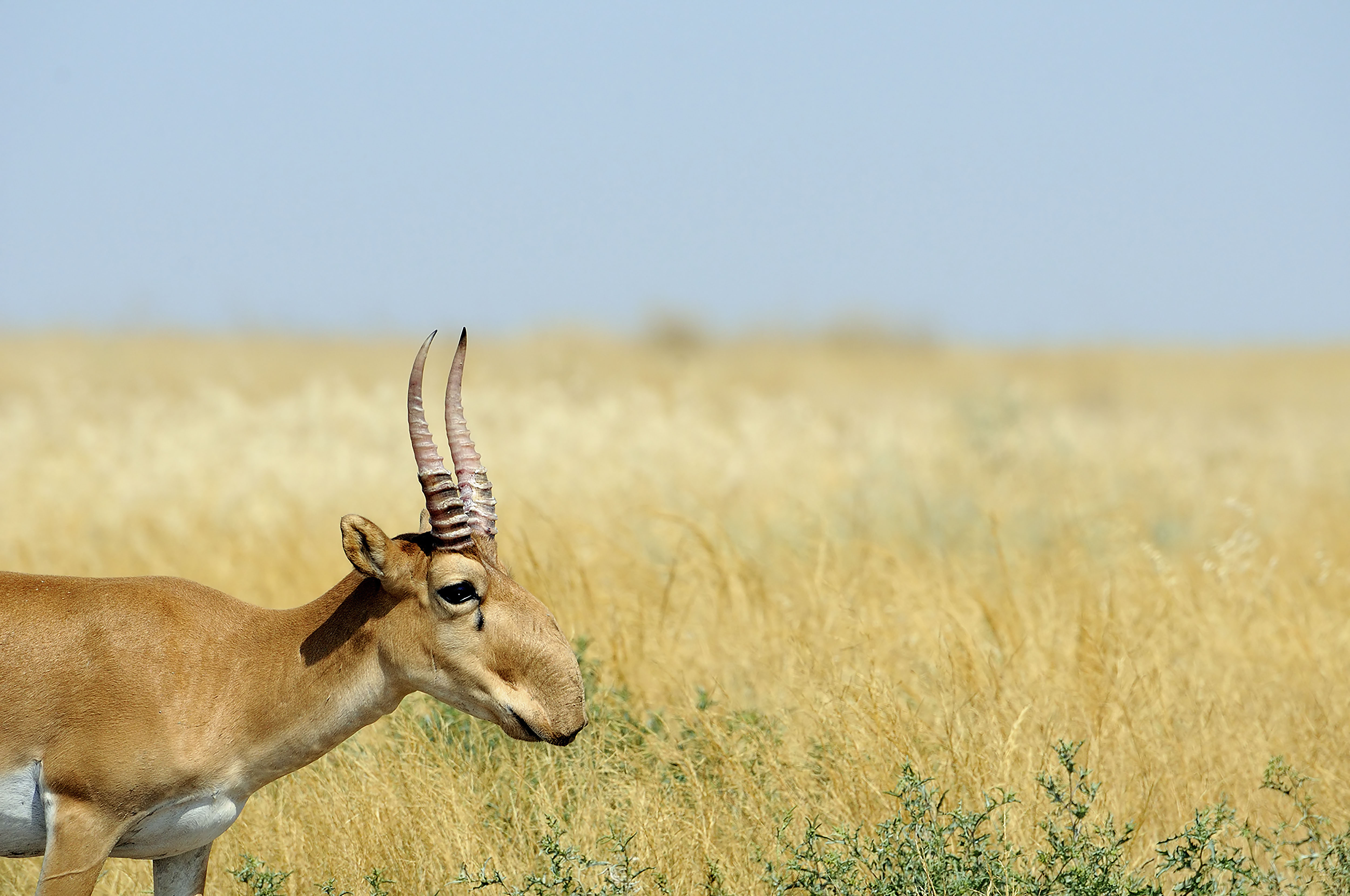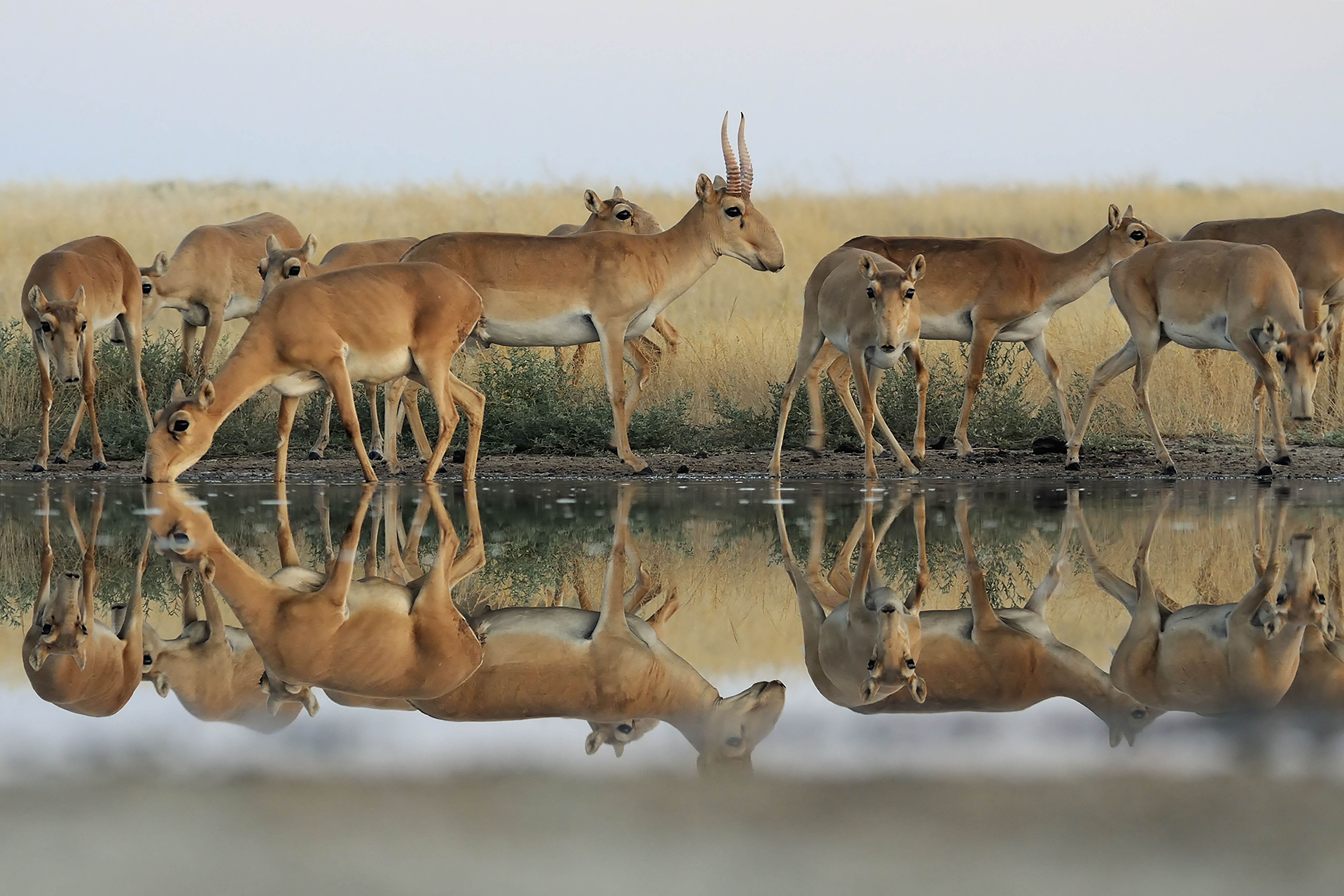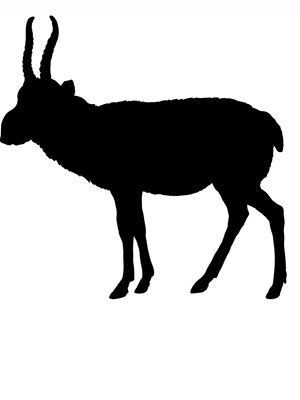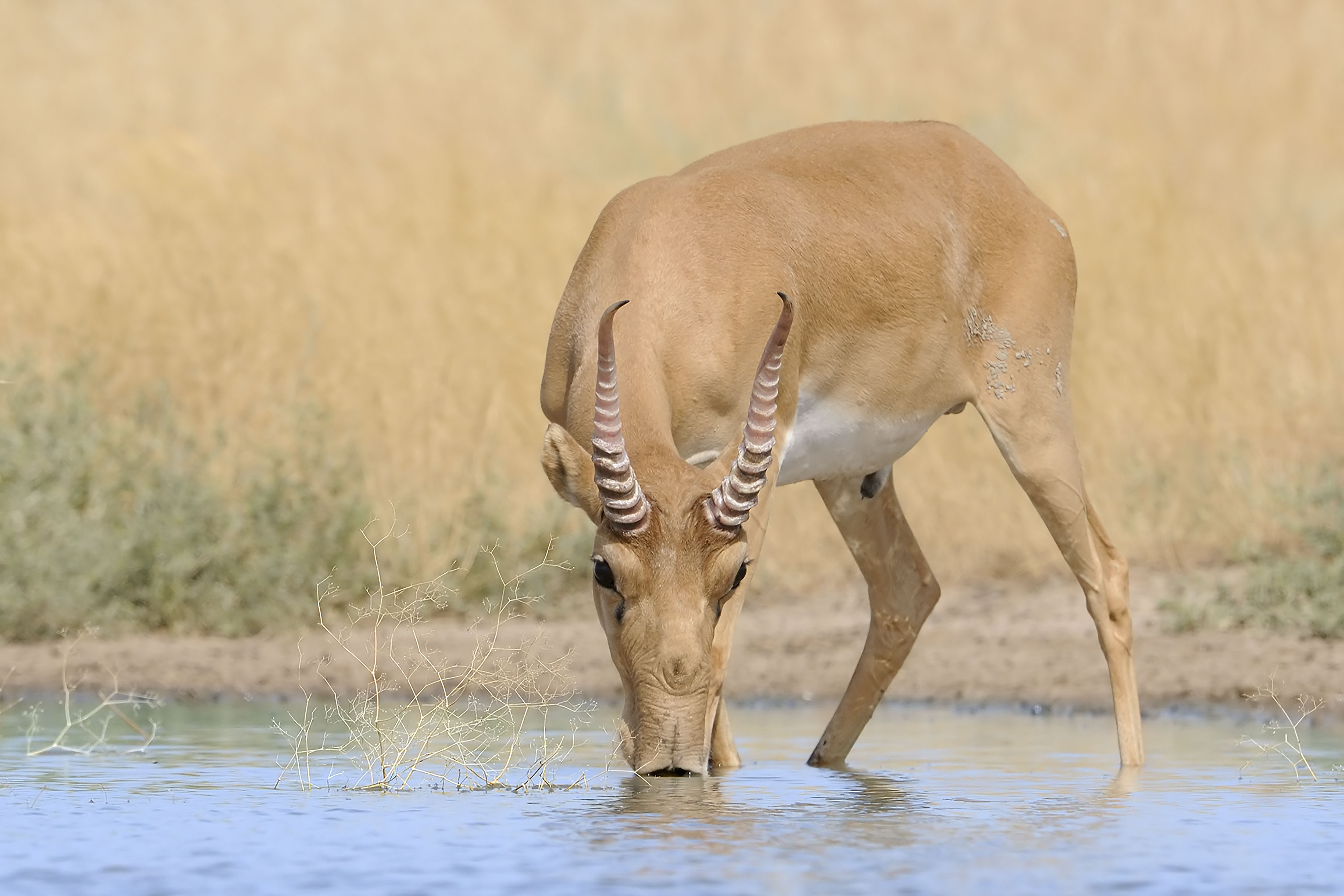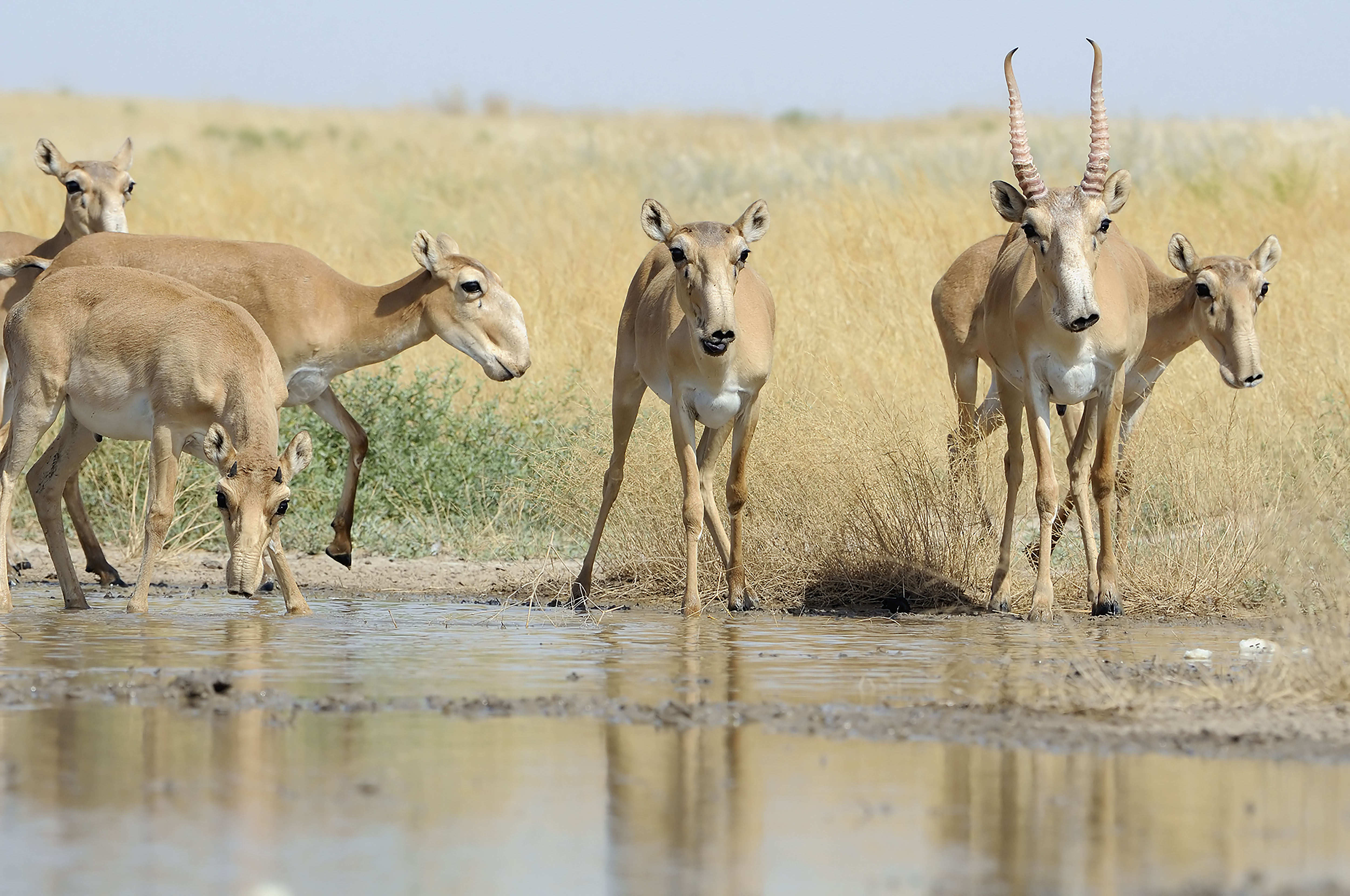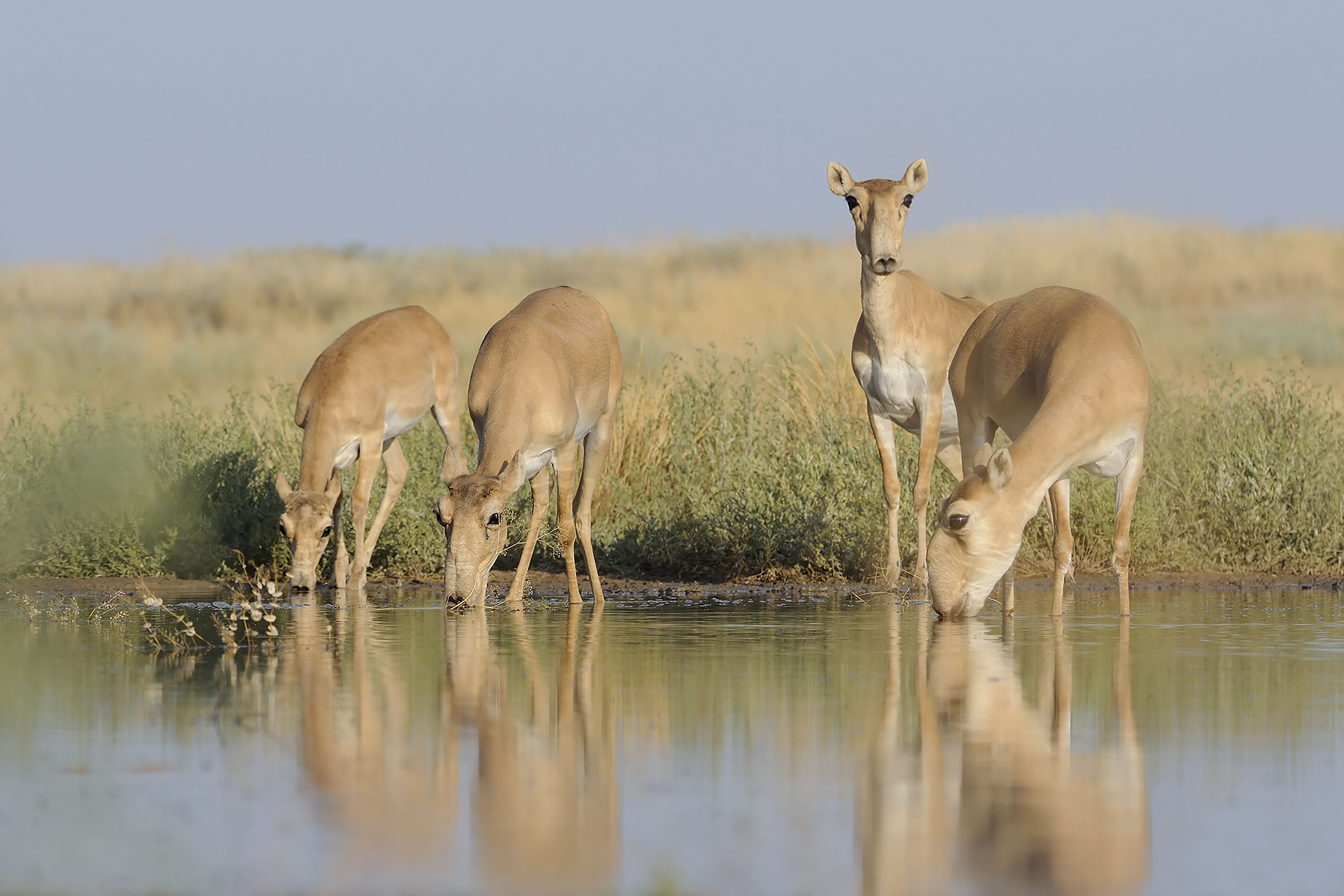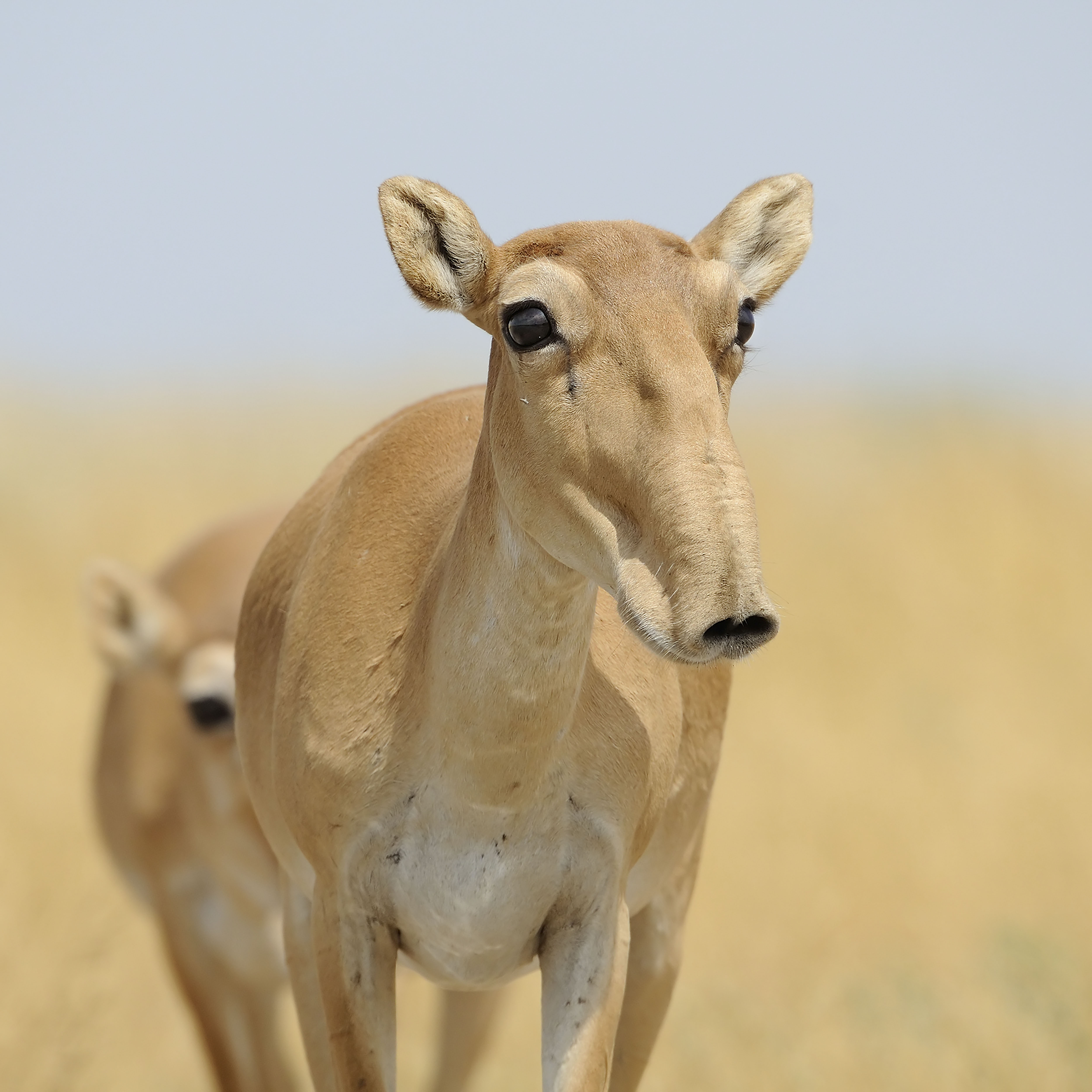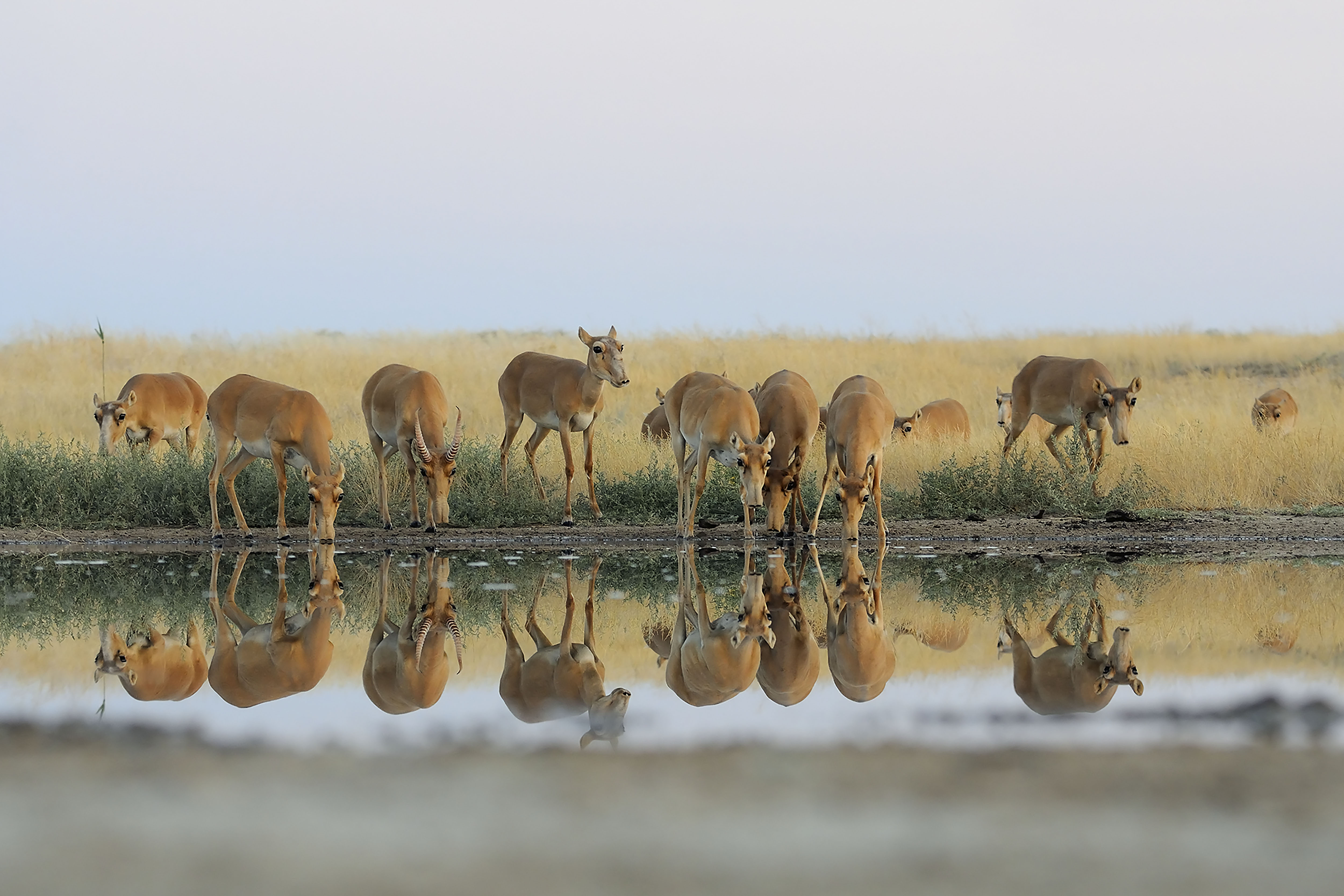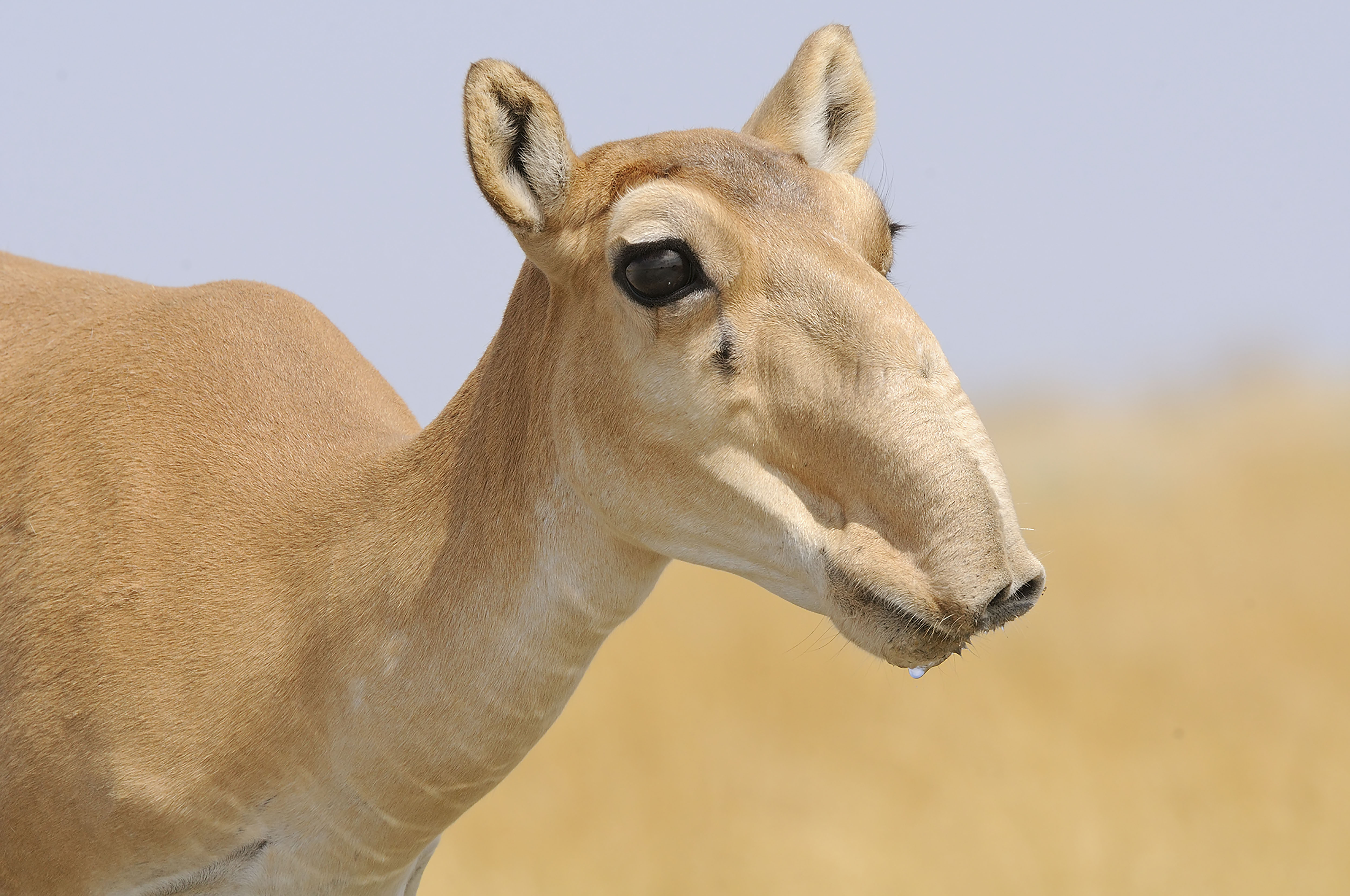Saiga Antelope
(Saiga tatarica)
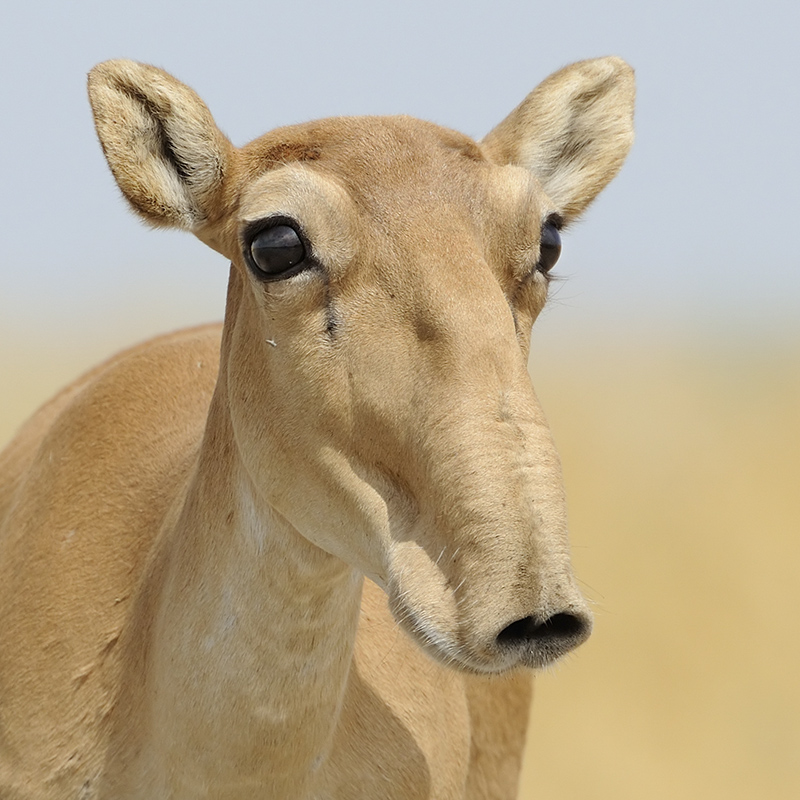
Volga River Delta
STATISTICS
Height up to
81 cm
Length up to
1.5 meters
Weight up to
69 kgs
Lifespan
10 years
Fast Runner - Migratory - Rapid Reproducer - Living Air Filter
Native to Central Asia, the Saiga is a nomadic herding species that inhabits open dry steppe grasslands and semi-arid deserts. It has a massive head with a large mobile nose that hangs over its mouth. Males have longhorns with ringed ridges. Traveling in large groups at a pace of up to 115 km per day, it spends its summers and winters in different ranges. In more favourable climates, it can increase its population size by up to 60% in a single year.
Additionally, during mating (or rutting) season, males experience severe swelling of their nose, and the hair under their eyes becomes covered in a sticky secretion. This is thought to filter out airborne dust during dry summer migrations and to facilitate the warming of cold, winter air before it reaches the lungs. The Saiga species takes part in intense fights, which often leads to death. During rutting, the male mortality rate can reach around 90%, creating an unbalanced sex ratio among the species. It is a herbivore and eats a large variety of plant species, specifically prostrate summer cypress, saltworts, fobs, sagebrush, and steppe lichens. It plays a vital role in preventing the proliferation of any single plant species.
BIODIVERSITY BENEFIT
Ecosystem Engineer
THREATS
Hunting
For medicinal purposes as well as valued for its skin, horns and meat.
Climate Change
Extreme climatic events such as drought and flood may impact this species.
Disease
Susceptible to several diseases including foot and mouth, brucellosis and others.
PROTECT THE WILDARK 100
